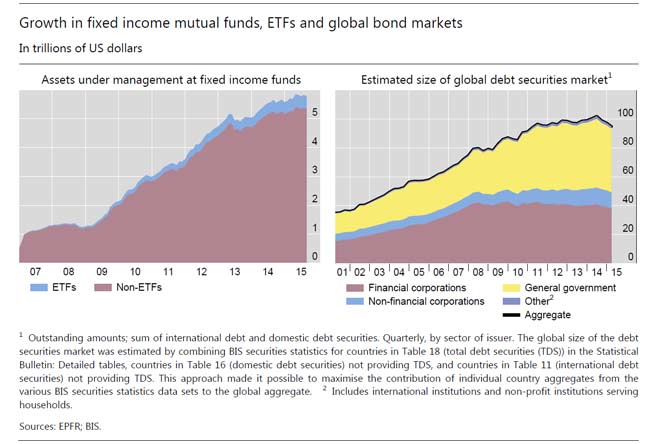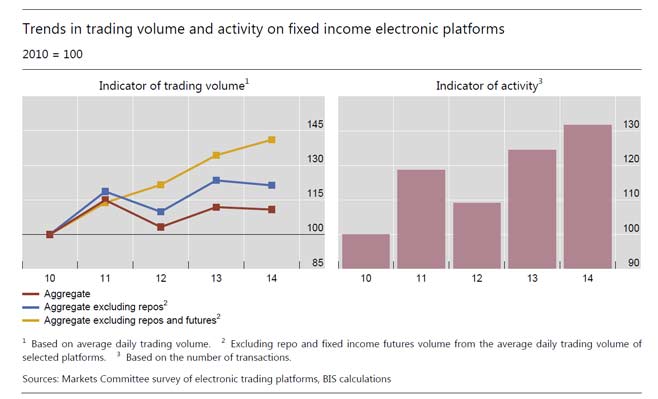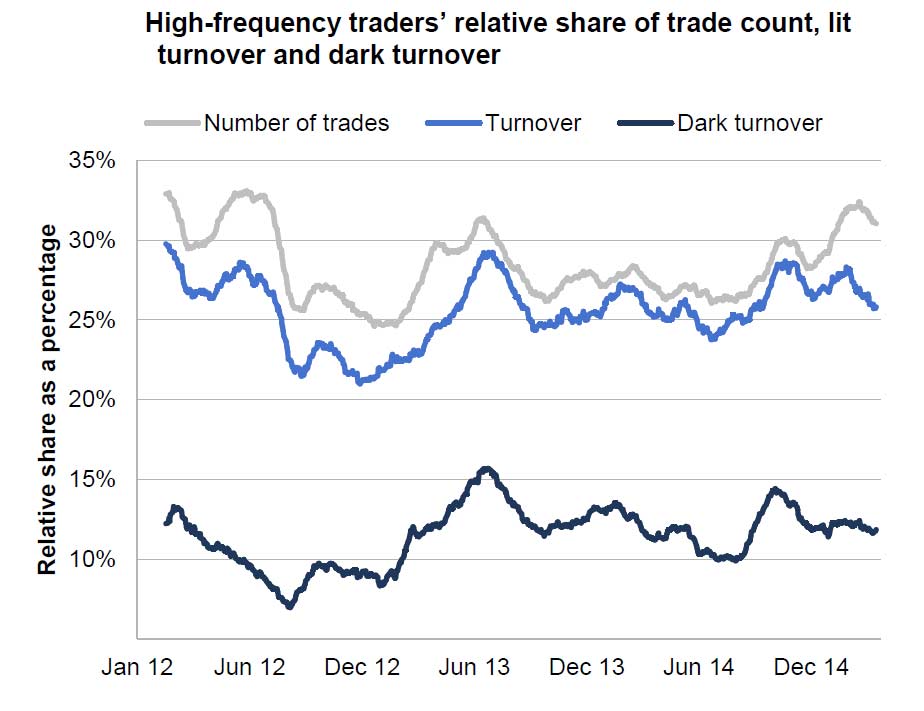Regulators globally are facing new challenges brought by structural change and digital disruption. There are both opportunities and challenges posed – it is about harnessing the opportunities while mitigating the risks.
I believe that the great drawcard of digital disruption is the opportunity it brings. The markets are seeing this with global investment in fintech ventures tripling to US$12.2 billion in 2014, from US$4 billion in 2013.
It is nothing new when you think about innovations like credit cards and ATMs, which were developed by banks to facilitate customer access. But now, new developments are going beyond the banking system directly to the customer.Businesses have seen the potential for new ways of directly creating and sharing value with technologically savvy investors and consumers. Examples include:
- peer-to-peer lending and market-place lending
- robo-financial or digital advice
- crowdfunding
- payments infrastructures (e.g. digital currencies, Apple Pay).
- In the future, we will likely see further developments in insurance priced to reflect deeper understanding of individual risk characteristics, in areas such as home, life and car insurance (such as the use of telematics by QBE’s Insurance Box).
- Importantly, there is much work going on globally exploring the potential of blockchain technology.
All these innovations have the potential to change the way that investors and financial consumers interact with financial products and payments. But many of these activities may not fit neatly within existing regulatory frameworks or policy. The challenge for us will be to ensure that we continue to deliver on the priorities I mentioned earlier – investor and consumer trust and confidence and fair, orderly, transparent and efficient markets – in the face of these developments.
Potential that these developments have for capital markets – To help understand what this challenge means to us, I’d like to talk in more detail about blockchain technology. This technology – if it takes off as I think it will – has the potential to fundamentally change our markets and our financial system.
What is blockchain technology? Chances are you have heard about bitcoin – the digital currency. ‘Blockchain’ is the algorithm behind bitcoin that allows it to be traded without a centralised ledger. In basic terms, it is an electronic ledger of digital events – one that’s ‘distributed’ or shared between many different parties. And it maintains a continuously growing list of data records. It has three key features:
First, it is a vehicle for transferring value and holding records – each transaction or record is evidenced by a unique data set or ‘block’ that attaches to the continuously growing blockchain.
Second, it does not involve a central authority or third-party intermediary overseeing it or deciding what goes into it. The computers that store the blockchain are decentralised and are not controlled or owned by any single entity.
Third, every block in the ledger is connected to the prior one in a digital chain algorithm. So the record of every transaction lives on the computers of anyone who has interacted with it, and is updated with each entry. The continual replication and decentralised nature makes it secure.
How can blockchain transform capital markets? – I see four reasons.
First, efficiency and speed. At present, when investors buy and sell debt and equity securities or transact derivatives, they generally rely on settlement and registration systems that take sometimes several days to settle trades. It can take even longer, sometimes, where the trade involves cross-border parties. Blockchain holds potential to automate this whole process.
Second, disintermediation. Blockchain automates trust; it eliminates the need for ‘trusted’ third-party intermediaries. In the traditional market, buyers and sellers can’t automatically trust each other, so they use intermediaries to help give them the comfort they need. With blockchain, the decentralised ledger offers this trust. Investors can deal with each other and with issuers in private markets directly.
Third, reduced transaction costs. By eliminating the need to use settlement and registration systems and other intermediaries, there is significant potential to reduce transaction costs for investors and issuers. A June report backed by Santander InnoVentures, the Spanish bank’s fintech investment fund, estimated that blockchain could save lenders up to $20 billion annually in settlement, regulatory, and crossborder payment costs.
Fourth, improved market access. Because of the global nature of blockchain, global markets have the potential to become even more easily accessible to investors and issuers; therefore making it easier for investors and for issuers to invest in and issue debt and equity securities.
Naturally, harnessing this potential will depend on the integrity, capacity and stability of blockchain technology and processes. It will also depend on industry’s willingness to invest in, and make use of, new ways of settling and registering transactions. The potential is, nonetheless, enormous. Industry is seeing that potential and is looking to see how it and the markets might benefit.
Blockchain developments – Let me touch on four areas where the benefits of blockchain are being explored:
The first is in share, loan and derivative trades. A series of start-ups are looking to use blockchain to execute and settle securities and derivative trades.
The second is in private equity transactions. The US stock exchange, NASDAQ, is experimenting with using blockchain technology as a way of recording private equity transactions. In doing so, it hopes to provide ‘extensive integrity, audit ability, governance and transfer of ownership capabilities’.
The third is in government bond trades. A US firm is developing a way to use blockchain to record and settle short-term government bond trades on a distributed ledger.
The fourth is in money transfer. In Mexico City a firm has developed an app that lets migrants send money via the blockchain to Mexico and withdraw cash from ATMs.
How regulators are responding – I have talked about the opportunities blockchain offers. But, as I have said, these opportunities can also threaten our strategic priorities of investor trust and confidence and fair, orderly, transparent and efficient markets. Right now, we don’t know exactly how blockchain or other disruptive technologies will evolve. But, for now, it is fair to say that they will. Blockchain potentially has profound implications for our markets and for how we regulate. As regulators and policymakers, we need to ensure what we do is about harnessing the opportunities and the broader economic benefits – not standing in the way of innovation and development. At the same time, we need to mitigate the risks these developments pose to our objectives. We also need to ensure those who benefit from the technology trust it. And, at the end of the day, we are working to ensure that investors and issuers can continue to have trust and confidence in the market.
How ASIC is responding to digital disruption? – ASIC’s role in ensuring that we harness the opportunities while mitigating the risks covers five key areas:
First, education. We are supporting investors and financial consumers in understanding the opportunities and the risks of participating in the digital economy. For example, our MoneySmart website, which last year received over 5 million visits.
Second, guidance. We are engaging with and providing guidance to industry in these areas. I want to mention two particular activities:
– The first is our cyber resilience work. We have undertaken significant work in the area of cyber resilience. Cyber resilience is the ability to prepare for,
respond to and recover from a cyber attack. In March this year, we published guidance for businesses to help in their efforts to improve cyber resilience and manage their cyber risks.
– The second is our Innovation Hub – we launched this last year. Much innovation in financial services comes from start-ups and from outside the regulated sector. The Innovation Hub is designed to make it quicker and easier for innovative start-ups and fintech businesses to navigate the regulatory system we administer. The Innovation Hub – which also includes our new industry-led Digital Finance Advisory Committee – also provides us with important information about the developments that are on the horizon, and how they might fit into the current regulatory framework.
Third, surveillance. We monitor the market and understand how investors use technology and financial products and the risks that arise. We undertake continual scans of the landscape, including developments overseas, to better understand new developments, the pace of change and emerging risks that may be posed by structural change driven by digital disruption. In the case of blockchain, there is a need for regulators to focus on and understand a number of issues, including:
– how blockchain security might be compromised
– who should be accountable for the services that make the blockchain technology work
– how transactions using blockchain can be reported to and used by the relevant regulator.
Fourth, enforcement. Of course, where we detect misconduct by our gatekeepers, we will take action. Our challenge here will be to understand how regulatory action can be taken where a transaction entered into here or overseas is recorded in the blockchain.
Fifth, policy advice. Ensuring the right regulation is in place to protect investors and keep them confident and informed, while also not interfering with innovation.
We also need to ensure that rules are globally consistent and regulators can rely on each other in supervision and enforcement with such developments. We will continue to review the current regulatory framework, analyse how new developments, such as blockchain, may fit into the framework and identify where changes may be required.
How IOSCO is responding – IOSCO too has a key role to play in this area, especially in ensuring that there is a global strategy in place and that cooperation between regulators is in place – in order to meet the challenge of addressing issues arising from cross-border transactions. IOSCO’s work plan this year in this area includes the following four priorities:
The first is working to identify and understand risks flowing from digital disruption to business models. In fact, the IOSCO Board will be holding a stakeholder
roundtable next month in Toronto to discuss financial technology developments and regulatory responses.
The second is in the international policy space. This is about designing regulatory toolkits and responses that are flexible, creative, and provide incentives for financial technology innovation that drive growth without undermining investor and financial consumer trust and confidence in our markets.An example of this is work we are considering on crowdfunding.
The third is in the area of cyber resilience. We are working with the Committee for Payments and Market Infrastructures to develop guidance that will help strengthen the cyber resilience of financial market intermediaries.
We expect this guidance to be finalised next year.
The fourth is on strengthening cooperation. We are working on enhancements to IOSCO’s Multilateral Memorandum of Understanding – or MMOU – to deal with the new technological environment in which we are operating.
The MMOU is a cooperation arrangement that enables 105 regulators to share information to combat cross-border fraud and misconduct. These enhancements will make it easier for us to take action in relation to cross-border transactions.






